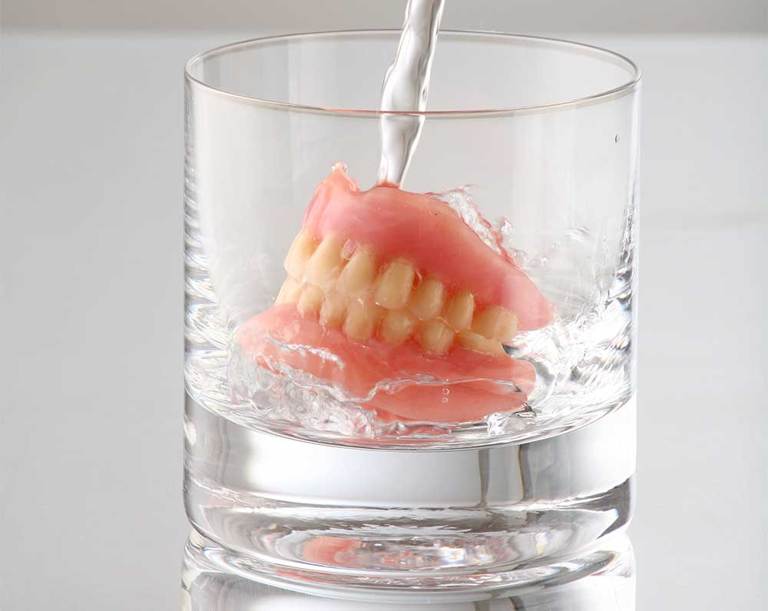Dentures & Partials
A full arch denture is a removable tooth replacement option for those who need all their teeth replaced. They can be crafted to provide the characteristics (tooth shape and color) the patient desires. Advances have been made in the materials used for dentures and in the way they are designed. If you already have dentures (partial or full arch) you may be experiencing a loose fit or denture slipping. This can lead to gum sores, can affect your chewing and your speech and decrease your confidence when speaking and/or laughing with others. We can help restore your dentures to the correct fit.
Why A Full Arch Denture?
If you are in need of replacing an entire arch of teeth, a full arch denture is going to be the most affordable tooth-replacement option. Additionally, not having any teeth causes mild to severe physical changes in your face mouth and lips. A full arch denture can restore some biting and chewing functionality and bring back a more attractive appearance.

Partial Dentures
Removable partial dentures are composed of a metal framework with plastic teeth and gum areas. The framework includes metal clasps or other attachments, which hold the denture in place. Partial dentures are removed easily for cleaning.
Clasps are C-shaped, I-shaped, and Y-shaped parts of the denture framework that fit around neighboring natural teeth. These teeth may require shaping to help hold the clasps and keep the denture securely in place.
Precision Partials
Precision partial dentures are retained in the mouth by interlocking components. A specially shaped extension of the partial fits snugly into or onto a receiving area or projection of a natural tooth that has been crowned. This makes for anti-slip dentures that won't move or come out when you speak or chew.
Flexible Partial Dentures
Flexible partials are very comfortable. They are made from the latest technology in thermoplastic resins.
Depending upon your condition, flexible partials may be all thermoplastic or they may be combined with Vitallium bio-compatible metal for increased strength.

Over Denture
An over denture fits on top of natural teeth or dental implants. Many patients suffer with ill fitting and loose dentures that move or even fall out when speaking or eating. One way of solving this problem is to construct a dental plate that goes over and attaches to something underneath it. Keeping a few natural teeth or placing dental implants in the bone under the denture also helps keep the jaw bone healthy. This avoids much of the natural jaw bone loss often seen after teeth are removed. Traditional over dentures go over natural teeth. A denture can be made that goes over and attaches to one or both cuspids. Implants supported over dentures fit on top of dental implants. A retainer bar or retention balls are placed on the implants and special attachments are inserted into the denture to grab onto these retention devices. A new method using mini implant dentures is becoming increasingly popular. Mini implants are very thin, long titanium implants that screw into the jaw bone. They can be placed and old dentures can often be retrofitted to the implant.
Denture Instructions
Occasionally, it is difficult to adapt to full or partial dentures. At first they may feel loose, bulky and awkward while speaking. For a quicker adjustment period, follow these instructions:
- At first, wear your dentures all the time.
- Do not use adhesive unless Irwin Dentistry advises you to do so.
- You should remove your dentures when you go to sleep.
- After removing dentures, clean with a toothbrush and place in a bowl of water. They can be soaked in a commercial denture cleanser, but brushing them is essential.
- Any signs of "sore spots," discomfort, or looseness that is causing you difficulty should be brought to our attention.
Never adjust the dentures yourself. Every person and every mouth is different; therefore, adjustment periods will vary.
Please remember that it will take time for you to become completely comfortable with your new teeth.

